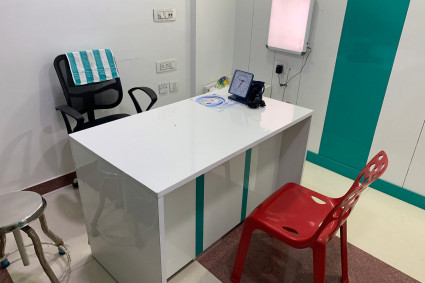
In a ward where as many as ten languages could be spoken, proper documentation is not just about being clear, but caring. Nurses, therapists, and doctors working in the NHS are dealing with patients with non-English as their first language daily. However, progress notes should remain accurate, compliant, and communicable. That’s where a smart progress notes template changes everything. It doesn’t just capture information—it connects people.
This guide breaks down how modern progress notes templates help NHS clinics document across languages, improve workflow, and maintain quality. We’ll also explore real examples, SOAP formats, and how platforms are helping clinicians document confidently in multilingual settings.
Why Progress Notes Still Matter in a Multilingual NHS?
The thread connecting care is progress notes. GPS to specialists, they are making sure that everyone is informed about what has been done, what is going to happen, and what follows. However, in a multilingual situation, even minor misunderstandings may spiral out of control, such as missed symptoms, incorrectly given instructions on medication, or slow referrals.
That’s why having a multilingual‑friendly progress notes template isn’t a luxury anymore—it’s a clinical necessity. These templates provide structure and consistency such that, despite the language used at the point of care, all entries are based on the same logical flow.
What Makes a Great Progress Notes Template?
A great progress notes template does three things:
- Makes writing fast and intuitive.
- Keeps SOAP (Subjective, Objective, Assessment, Plan) formatting consistent.
- Supports multiple languages or translation assistance without losing meaning.
The goal is simple — record every detail accurately, no matter who the patient is or which language they speak.
Understanding the SOAP Format in Progress Notes
The clinical documentation standard of gold is the SOAP format. It breaks down notes into clear parts and is thus easy to revise and refer to.
- What the patient reports- symptoms, concerns, or feelings.
- This is what the clinician notices – the Vitals, test results, or exam results.
- Evaluation of the professional basis of what is going on.
- Further action: drugs, referrals, follow-ups.
When a progress notes template follows this structure, communication becomes universal. The message is retained in the format even when a patient report is translated.
Multilingual Progress Notes Example for NHS Clinics
Take the case of a physician who is a physiotherapist, and his patient has a knee injury, is of Spanish ancestry.
- Subjective: "Dolor en la rodilla después de caminar por más de 15 minutos." (Translation: Suffering in the knee after walking for more than 15 minutes.)
- Results: Improvement of the range of motion (10deg), swelling (mild).
- Evaluation: Developing fine; the pain must be related to overuse.
- Plan: Keep exercising; review after one week.
This progress notes example shows how multilingual notes can work when guided by structure. With built-in translation or multilingual entry support, clinicians can record in a way that’s understandable for all care team members — even across language barriers.
Benefits of SOAP Notes in Multilingual Settings
SOAP Notes aren’t just a documentation format—they’re a bridge between languages and disciplines.
Clarity and Consistency
Every clinician, regardless of language or speciality, reads the same pattern. That consistency keeps notes accurate, especially when multiple professionals are involved in patient care.
Better Compliance
When your progress notes follow a structured SOAP format, it’s easier to align with NHS, HIPAA, and other compliance standards. Secure templates make sure no patient data is lost or mistranslated.
Improved Collaboration
A standard format means multilingual care teams can easily understand and build on each other’s notes, keeping patient care seamless.
Time Efficiency
Pre-set sections and smart prompts reduce manual typing and cut down note completion time—something every busy clinic appreciates.
That’s the real benefit of SOAP Notes: accuracy meets speed without sacrificing patient understanding.
What to Include in a Progress Notes Template Example?
A practical progress notes template example for NHS clinics should include:
- Patient identifiers and visit details
- SOAP structure with prompts
- Date/time stamps
- Section for translations or interpreter notes
- Secure data encryption (especially for HIPAA compliance)
Modern tools like HealthOrbit AI integrate all these features, letting clinicians document in seconds—hands-free, multilingual, and compliant.
Why Secure AI Matters?
Security is often overlooked until it’s too late. A truly Secure AI system ensures that every progress note template SOAP entry is encrypted, stored safely, and accessible only to authorised users.
This is especially vital when dealing with multilingual inputs or translation features. Data moving between systems must stay compliant with NHS and HIPAA privacy standards. When your documentation platform prioritises Secure AI, your team can focus on patients, not paperwork.
How HealthOrbit AI Supports Multilingual Documentation?
HealthOrbit AI was designed for busy clinicians working across languages and care settings. It helps providers create, translate, and organise notes without losing accuracy or tone.
With its progress notes template and built-in language support, clinicians can speak naturally, document instantly, and trust that every word is correctly interpreted and securely stored. Whether you’re using it in outpatient clinics, rehabilitation centres, or general practice, it adapts to your workflow.
Future of Progress Notes in the NHS
The future of NHS documentation is multilingual by design. As care becomes more diverse, the systems supporting it must keep up.
Soon, every progress note patient entry might automatically translate for specialists across the country — no delays, no misunderstandings. Platforms like HealthOrbit AI are already paving the way, showing that when documentation tools evolve with clinicians in mind, patients benefit the most.
Final Thoughts
Multilingual documentation shouldn’t be complicated. A well-designed progress notes template can turn complex, multilingual exchanges into simple, clear, and compliant records.
From SOAP formatting to Secure AI integration, it’s all about making notes more human — so care stays focused on people, not paperwork. If you’re looking to make your documentation faster, safer, and multilingual-ready, explore how HealthOrbit AI can help NHS teams move toward smarter, more inclusive care.




